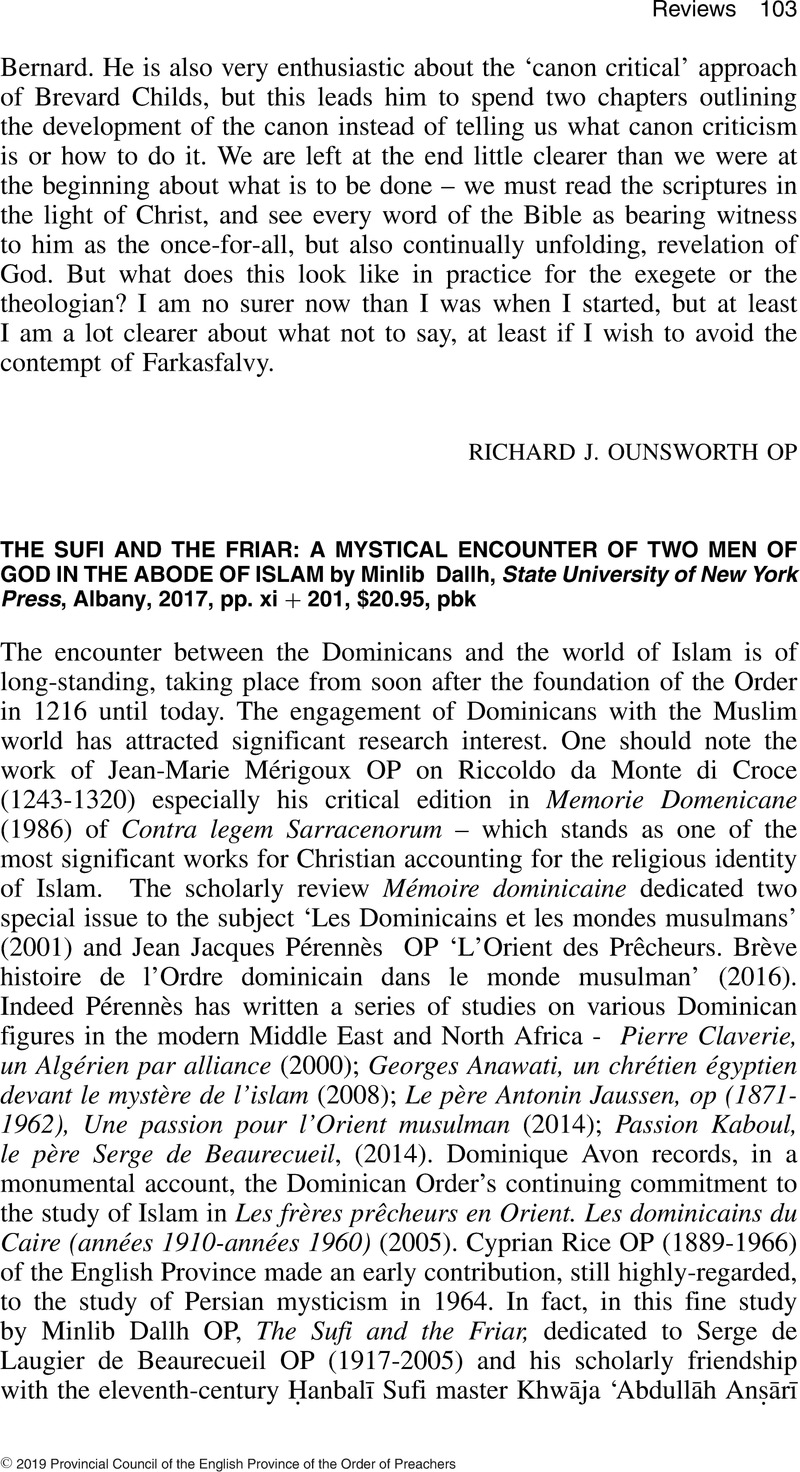No CrossRef data available.
Article contents
The Sufi and the Friar: A Mystical Encounter of Two Men of God in the Abode of Islam by Minlib Dallh, State University of New York Press, Albany, 2017, pp. xi + 201, $20.95, pbk
Review products
The Sufi and the Friar: A Mystical Encounter of Two Men of God in the Abode of Islam by Minlib Dallh, State University of New York Press, Albany, 2017, pp. xi + 201, $20.95, pbk
Published online by Cambridge University Press: 01 January 2024
Abstract
An abstract is not available for this content so a preview has been provided. Please use the Get access link above for information on how to access this content.

- Type
- Reviews
- Information
- Copyright
- Copyright © 2019 Provincial Council of the English Province of the Order of Preachers


